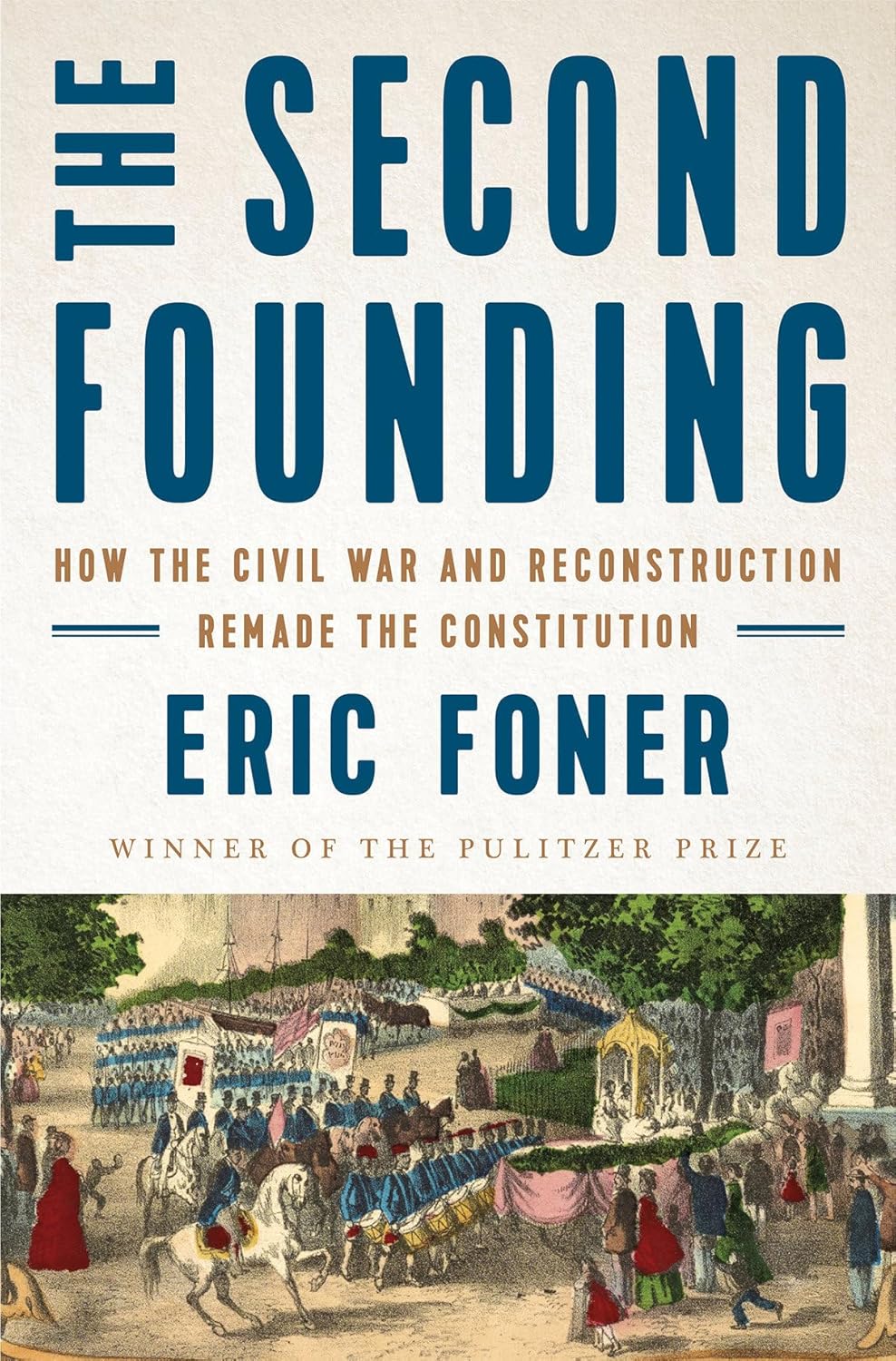In 1988 Eric Foner published Reconstruction: America’s Unfinished Revolution, 1863-77, a grand narrative built on ground largely cleared of the racist litter left by previous scholars. It is a stupendous scholarly achievement: eloquent, accessible, punctiliously accurate, marvellously detailed, bristling with insight, conscious of broad economic, social and cultural forces, alert to personal quirks, and attentive to the ideas and activities of the actors – often women and racial minorities – historians often marginalise or ignore. For thirty years it has remained the leading work of Reconstruction historiography, despite ideological disputes and changes in methodological fashion.
In The Second Founding: How the Civil War and Reconstruction Remade the Constitution, Foner narrows his focus to the key legal transformations of the era. He argues that the Reconstruction Amendments ‘should not be seen simply as an alteration of an existing structure but as a ... “constitutional revolution” ... that created a fundamentally new document with a new definition of both the status of blacks and the rights of all Americans’. Much of American history has been shaped by struggles over these amendments and whether they should be seen as mere ‘alterations’ or as a fundamental remaking of the Founding Fathers’ handiwork. Conservatives tend to take the former view, liberals the latter. One reason this struggle has been so intense is that each side can adduce facts, ideas, sentiments and historical developments that support their position.
Foner supports the liberal position. He emphasises the gulf that separates life in America before the Reconstruction Amendments from life afterwards, particularly in its racial aspects. Before Reconstruction, the civil liberties enshrined in the constitution placed limits on the federal government, but not on individual states. The constitution aimed primarily to prevent the federal government encroaching on individual liberty, including the freedom to own slaves. With Reconstruction, reformers sought to empower the federal government to guarantee the rights afforded by the three new constitutional amendments, as well as the older rights some saw as being incorporated into the new regime. These older rights were contained in the first ten amendments to the constitution. Sometimes referred to as the Bill of Rights, these amendments, ratified in 1791, provided for (among other things) freedom of religion, freedom of speech, freedom to bear arms, a prohibition against quartering soldiers in homes, a right not to face unreasonable searches and seizures, and a right to speedy trial by an impartial jury.
Foner doesn’t embrace Thurgood Marshall’s claim that the Civil War extinguished the constitutional regime of 1787. That assertion – wishful thinking perhaps – goes too far. For good and for bad – mostly bad – the initial constitution displayed a striking resilience, inhibiting efforts to elevate former slaves, protect them against resentful whites, or undergird their new freedom with socio-economic support. Like Marshall, however, Foner does seek to alter the general view of the Reconstruction and increase its standing. The Founding Fathers – including George Washington, Benjamin Franklin, James Madison and Alexander Hamilton – enjoy widespread, if superficial, public recognition. By comparison, key framers of the Reconstruction Amendments – James Ashley, Charles Sumner, Lyman Trumbull and Thaddeus Stevens – are obscure. Unfamiliar, too, are the origins and back stories of their constitutional handiwork, which Foner ably describes.
